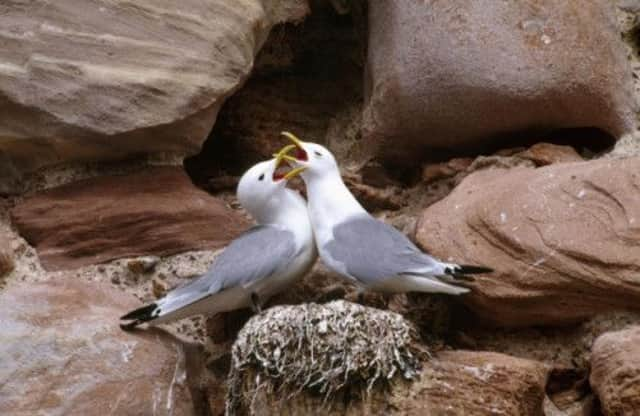Weather breeds fears for Scottish seabirds


Colonies on Orkney appear to have been hardest hit by the cold snap at the start of their traditional breeding season, preventing many birds from arriving to begin building their nests, according to early monitoring data gathered by RSPB Scotland.
Seabird counts on some sites around Orkney indicate a staggering 87 per cent reduction in the number of nesting kittiwakes compared with counts at the same sites as part of the last national seabird census in 2000.
Advertisement
Hide AdAdvertisement
Hide AdSteep declines in breeding pairs have also been recorded for guillemots and razorbills in both the Orkney and Shetland islands and as far south as Ailsa Craig in the Firth of Clyde.
Doug Gilbert, head of reserves ecology for RSPB Scotland, said: “This year, because it was such a cold and stormy spring, a lot of seabirds have come into condition much later and had a go at breeding and not done much.
“If they are in poor condition because of bad weather and have not been able to feed at sea, they just don’t have the energy supplies to lay eggs and raise chicks.
“Quite often, because they are programmed to do it, they have a go and then it all goes horribly wrong – they are unable to feed the chick or they lose interest in the egg. The numbers so far are really scary.” Mr Gilbert said the harsh conditions earlier this year had only added to the considerable long-term challenges seabirds already faced from lack of food due to the impact of climate change on the marine food chain, and poor management of human activities in the marine environment.
Seabird counts on some sites around Orkney show an 87 per cent reduction in the number of kittiwakes compared with 13 years ago. Razorbills on Orkney are down 57 per cent from a total of 2,228 in 2000 to just 966 in 2013 and guillemots on Orkney have declined by 46 per cent during the same period.
Seabird counts on Ailsa Craig have also suggested a poor season for species like guillemots and razorbills, with kittiwakes suffering a 70 per cent decline since the 2000 census.
Mr Gilbert said: “If, in Orkney, you only have 13 per cent of their usual number of breeding kittiwakes then the likelihood is that it is going to be terrible year for them. In previous years there literally have been no chicks on some of these large colonies.
“All these birds haven’t necessarily died – but they are not breeding this year.”
Advertisement
Hide AdAdvertisement
Hide AdMr Gilbert said some species appeared to have weathered the storm. He said: “There are exceptions such as puffin numbers on the Isle of May in the Firth of Forth but even here, many birds are reported as being in poor condition and unlikely to breed successfully. There are also some species like shags and gannets which have a prolonged breeding season which will still have some chicks. And storm petrels also lay their eggs very late. ”
Allan Whyte, RSPB Scotland’s marine policy officer, said: “These results should send a clear message to the Scottish Government that they must designate Marine Protected Areas for seabirds, and the sandeels they feed on, to give them a fighting chance. Giving seabirds the protection they deserve can help boost resilience in their declining population and allow them to recover after many poor breeding seasons.”
A full round-up of seabird breeding results is expected in the autumn.